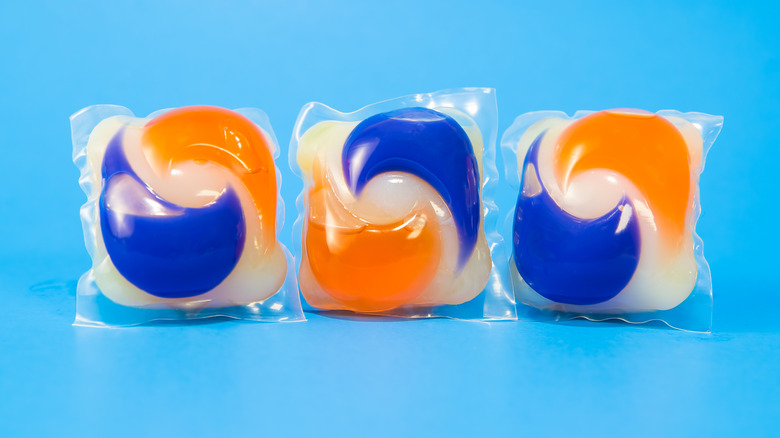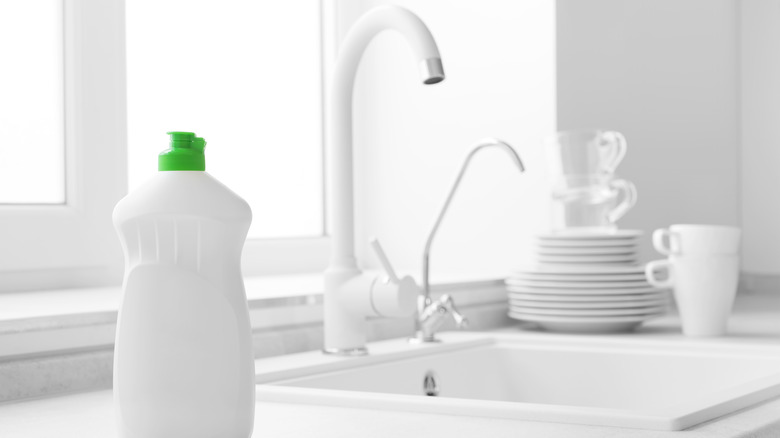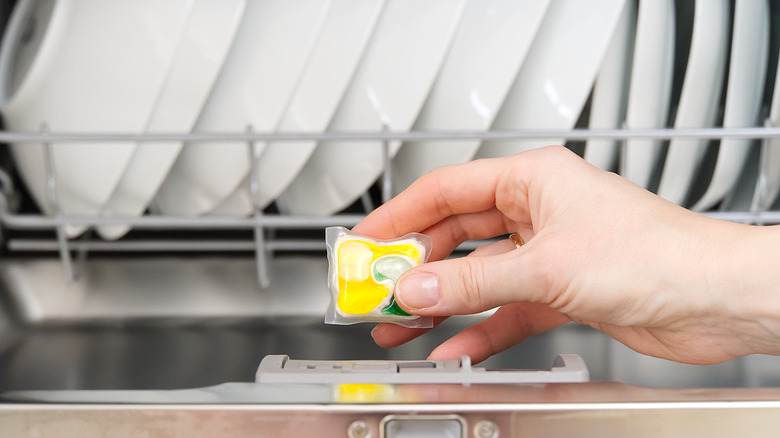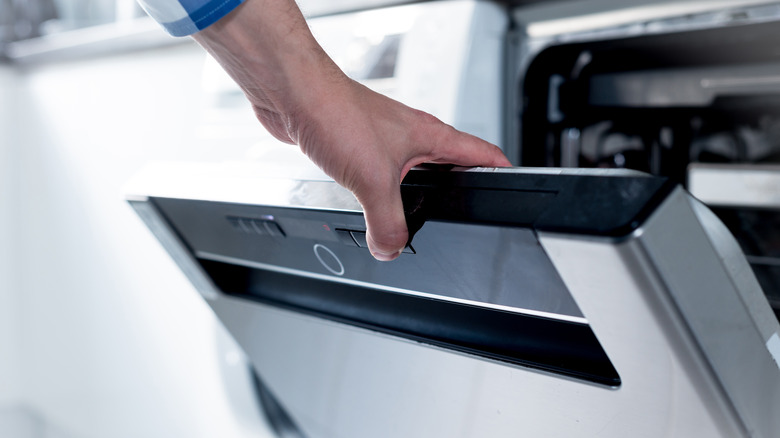What You Need To Know About Plastic Covered Dish Pods
Let's face it: those dirty dishes aren't going to wash themselves. And thanks to Josephine Cochrane, who patented the first commercially successful dishwasher in 1886 (via Lemelson-MIT), we don't have to stand over a sudsy sink to clean our cutlery. With plastic-covered dish pods offering a convenient, mess-free way to get your dishes clean, it's understandable that you'd want to keep a stash on hand.
When you stop to think about it, dish pods are one of the craziest inventions ever. Some formulations are environmentally friendly, and for those transitioning away from disposable dishes, more economical. Although they're a fantastic invention, they do have an air of mystery around them
But what's in those pods? How do they work? How do plastic components impact the environment? There are a couple things you should know about these little plastic pods. We took a look at plastic covered dish pods and can answer your questions about the detergent.
How plastic dish pods work
All soaps, no matter if it's body soap or dish soap, act as surfactants, which is a fancy way of saying they are a class of products which reduce the surface tension of the liquid they have been added to. By reducing surface tension, detergents allow the liquid (usually water) to wash away gunk and debris more easily.
It's because detergent molecules are partially lipophilic, that is, they bind to fats and lipids like grease and other slippery residues. Couple that with the fact that detergent molecules are hydrophilic, which means the solution is easily dissolved in water, which allows the product to wash away easily (via Polymer Solutions).
What's more, dishwasher detergent pods are ultra-concentrated; some brands have formulations with as little as 10% water in each pouch. In contrast, many liquid detergents can have as much as 90% water in their formulation (via Green Living Detective).
Other than detergent, what are the casings are made of?
Many dishwasher pods also include a rinse aid in addition to a detergent. The purpose of rinse aid is to reduce surface tension enough so that the tiny water droplets that form on dishes are rinsed away. Your dishes look even cleaner when the drops are allowed to wash away before they evaporate and leave deposits.
Now that we've covered why we use detergent to help loosen the dirt and grime that clings to our dishes, it's time to move on to the casing. The dish detergent in plastic covered pods come to consumers in polyvinyl alcohol (PVA). PVA dissolves easily in water (which is why the formulations contain such a small percentage of water) and can sit on a shelf without quickly degrading. By making the outside coating of a dishwasher pod out of this type of polymer, the user is able to store the pods longer (per Polymer Solutions).
Are dish pods environmentally friendly?
The Environmental Working Group (EWG) has given some dish detergents high marks for their earth-friendly formulations. While most companies market PVA as % water-soluble and biodegradable, a preliminary study by Arizona State University published in April 2021 found that "about 4% of the PVA from detergent pods is discharged undigested in treated water, while 65% ends up in sludge" that can be redistributed to community landfills or waterways. This sludge could harm aquatic ecosystems, the study's author claims.
As a counterpoint, the PVA used on dishwasher pods was studied in March 2021 by a research team and the outcome was that it is biodegradable and is unlikely to cause environmental damage (via Ethical Consumer)." Regardless of your stance on whether the plastic in dishwasher pods will break down over time or not, if you are trying to cut down your usage of plastic products, there are plastic-free dishwasher pods available.



